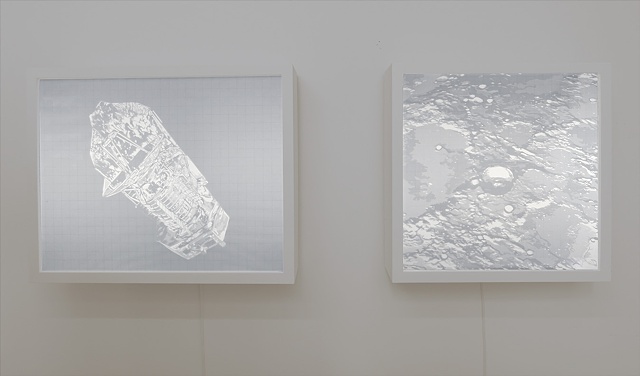Herschel Herschel
These images were created on 4 sheets of gridded vellum. The values are created by cutting through the four layers of paper to create five values of transparency. In the lightest areas I’ve cut through four layers, while where in the darkest I’ve cut through none. The images, like negatives, are all in reverse in terms of value and left/right orientation to create a parallel between drawings/image making and the photographic process. In regards to imagery, this piece explores the legacy of Sir Frederick William Herschel (1738-1822), who was a famous astronomer and in the late 1700s built a wooden 21 foot telescope and discovered Uranus and two Saturnian and Uranian moons. The image on the left is the Herschel Satellite, the largest space telescope, that was launched by the European Space Agency in 2009. The image on the right is the Herschel Crater, named in Herschel’s honor, on the Saturnian moon Mimas.
Sir Frederick William Herschel’s son, Sir John Frederick William Herschel was also an inventor, engineer, and photographer developed the cyanotype process. The second part of this piece entails using the vellum cut out images like calotypes (early paper negatives)and making cyanotype prints.
